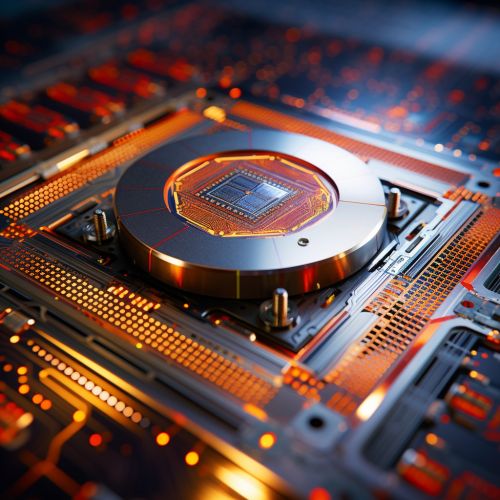Superconducting Quantum Bits (Qubits) Physics
Introduction
Superconducting quantum bits, or qubits, are the fundamental building blocks of quantum computers. They are the quantum equivalent of classical bits in a traditional computer, but with the added capability of being in a superposition of states, rather than just 0 or 1. This article delves into the physics behind superconducting qubits, their design, operation, and the challenges faced in their implementation.


Quantum Mechanics and Qubits
The principles of quantum mechanics are central to the operation of superconducting qubits. Unlike classical bits, which can be in either a 0 or 1 state, qubits can be in a superposition of states. This means they can be in both 0 and 1 states simultaneously, a property that allows quantum computers to process a vast number of computations at once.
Superconducting Circuits
Superconducting qubits are made from circuits of superconducting materials. These materials, when cooled to extremely low temperatures, exhibit zero electrical resistance, allowing current to flow without loss. This is crucial for maintaining the delicate quantum states of qubits.
Types of Superconducting Qubits
There are several types of superconducting qubits, each with its own design and operational principles. These include charge qubits, phase qubits, flux qubits, and transmon qubits.
Charge Qubits
Charge qubits, or Cooper pair boxes, are superconducting qubits where the quantum state is determined by the number of Cooper pairs that have tunneled across a Josephson junction.
Phase Qubits
Phase qubits are superconducting qubits where the quantum state is determined by the phase difference across a Josephson junction.
Flux Qubits
Flux qubits are superconducting qubits where the quantum state is determined by the direction of current flow, or magnetic flux, through a superconducting loop.
Transmon Qubits
Transmon qubits are a type of superconducting qubit that are designed to be less sensitive to charge noise, a common source of errors in superconducting qubits.
Qubit Coherence
One of the major challenges in quantum computing is maintaining qubit coherence. Coherence refers to the length of time that a qubit can maintain its quantum state. Decoherence, or loss of coherence, is caused by interactions with the environment and is a major source of errors in quantum computing.
Quantum Error Correction
Due to the fragile nature of quantum states, errors are inevitable in quantum computing. Quantum error correction is a set of techniques used to correct these errors without disturbing the quantum state of the qubits.
Future of Superconducting Qubits
Despite the challenges, the field of superconducting qubits is rapidly advancing. With improvements in materials, design, and error correction techniques, the future of superconducting qubits and quantum computing looks promising.
